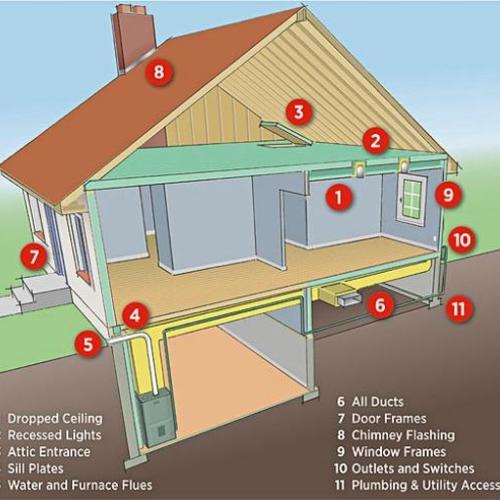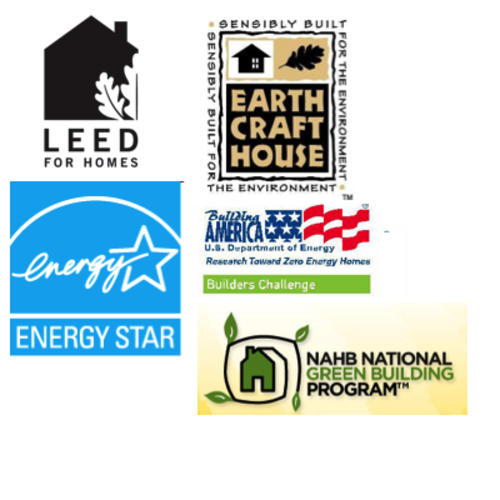
_The Link Between Energy Efficiency and Our Country’s Best Interests Are Now Well Understood. Here’s five reasons why the time is ripe to build and remodel green_
In my last semester of architecture school, I took an elective solar and energy-efficiency course. My life changed immediately and forever. And now, almost 35 years later, it appears the building industry has caught up and it’s time for “green.” Why now? I’ve got five reasons:
1. Consumers are watching their pocketbooks.
And they are increasingly concerned about extremely volatile energy prices. When both Democratic and Republican presidential candidates share a commitment to a Manhattan Project-scale investment in renewable and energy-efficiency technologies, there should be no debate on the future direction for housing. The market is responding as consumers increasingly demonstrate a preference for energy efficiency when choosing products ranging from lightbulbs, to cars to appliances to homes.
Also, the link between energy efficiency and our country’s best interests is now well understood. This includes the numerous detrimental impacts on our national security and economy with an unprecedented transfer of wealth occurring as Americans send approximately $700 billion to foreign countries annually to import oil to the United States. Consumers constantly bombarded with visual images depicting profound climate-change impacts (melting glaciers, drowning polar bears) understand good planets are hard to come by.
2. We’re not in Kansas anymore; builders can’t compete on price.
Nearly 2 million foreclosed homes at bottom-barrel prices are dominating sales, and about 1 million vacant homes are waiting in the wings to go on sale. If you’re a builder competing with these used homes based on price, you’ve got two hands tied behind your back. Moreover, the market for traditional new homes continues to shrink as demographic trends suggest 70 million-plus baby boomers and an equal number of baby boomer children seeking smaller homes and urban living.
As the universe of buyers who qualify for financing continues to shrink, builders need much more to offer than dollars per square foot and granite counters. Green and energy efficiency allow them to feature a compelling performance advantage compared with minimum-code homes. And for those builders willing to train their sales staff, it is often easy to show that green homes cost less to own when the cost of additional green features is easily offset by lower operational costs.
3. Quality is no longer invisible.
The infrared camera is poised to rock the housing industry. With this technology coming down in price from more than $30,000 to less than $4,500, the home-building industry is now vulnerable to affordable X-ray vision that exposes overall quality and common defects. This will be particularly true as home inspectors associated with approximately 70% of all existing home sales increasingly include infrared diagnostics with their inspections. Infrared cameras also present an opportunity because energy-efficient construction practices render more than 90% of the competition visibly obsolete.
4. The Internet makes consumers much smarter.
Over 80% of home buyers now research on the Web before buying a new home. And they have so much more information about quality (for example, the J. D. Power Web site), energy efficiency (the Energy Star for Homes Web site), costs (the Zillow Web site), and green (over 50 national and regional green housing programs with Web sites). There’s even a Web site in England, sure to become available in the U.S., that allows home buyers to enter an address to review an infrared camera satellite image comparing thermal performance to other homes of interest. The satellite image serves as a quick snapshot of quality based on relative heat loss through the rooftops. As the Home Energy Rating System (HERS) industry continues to develop an impressive national infrastructure, it offers consumers another new and important source of independent home-evaluation information before purchase.
5. The risk of inaction is too great.
The U.S. automobile industry is effectively a poster child for “head in the sand” business strategies. By ignoring leadership in fuel efficiency, safety, durability, quality, and innovation for decades, American manufacturers have fallen into the depths of irrelevance, from which they may never recover. Even if they can somehow survive, they are not expected to regain the industry stature they once owned.
The housing industry is facing the same challenges and opportunities, but no builder should expect a government bailout for inaction. Fortunately, builders across the country have finally connected the dots and are anxiously looking to demonstrate more-effective leadership.
It’s been almost 10 years since then–National Association of Home Builders president Charlie Ruma spoke his often-quoted line in 1999: “If you’re not building green in 10 years, you won’t be building.”
That time has arrived.
–Sam Rashkin is National Director of Energy Star for Homes. He lives in northern Virginia and works in Washington, DC.
Weekly Newsletter
Get building science and energy efficiency advice, plus special offers, in your inbox.














2 Comments
Green is here
Kudos to Sam for a well-thought out series of arguments. I strongly echo #5. The risk of inaction is too great.
We are all in this together; builders, designers, consumers, as well as regulators. We simply MUST work together. While the universe of green building will include many facets, most that are in the area of construction will fall to the Inspector to verify and regulate. To ensure a quality and meaningful contribuition to energy efficiency while limiting environmental harm, the building safety community of regulators WILL come together in a leadership role with the builders and designers to manage an effective regulatory process (or processes). From the world of the building safety professional, energy efficiency and green building will likely present the greatest change for the building inspector in their career, but one that is essential because the cost of inaction is too high.
These are some great
These are some great insights. It is almost amazing how long it has taken green building to hit the single-family market, but it is encouraging to see the tremendous momentum it is making. Consumers are rapidly becoming more educated and contractors more than ever need a source of differentiation; and at this intersection is green building. As this trend continues, green building is just getting steps closer to becoming the norm.
Home builders and contractors need to place themselves on the forefront of facilitating this transition; for those who fail to embrace the practices of green building are on the verge of extinction.
Log in or create an account to post a comment.
Sign up Log in